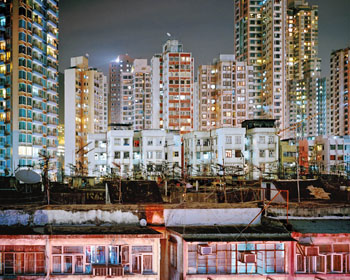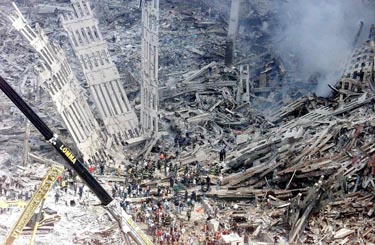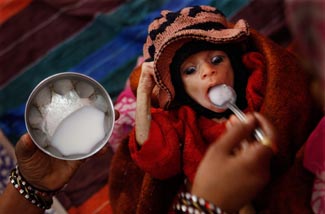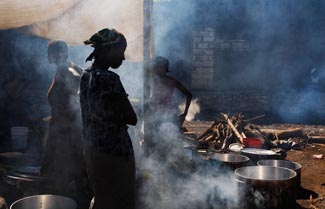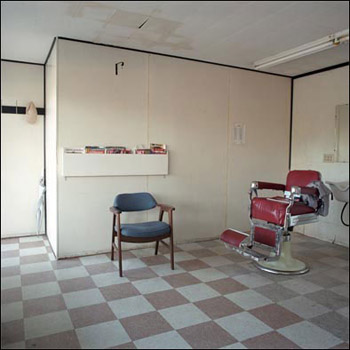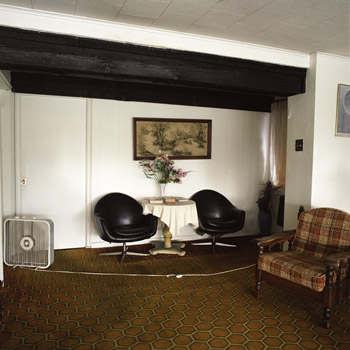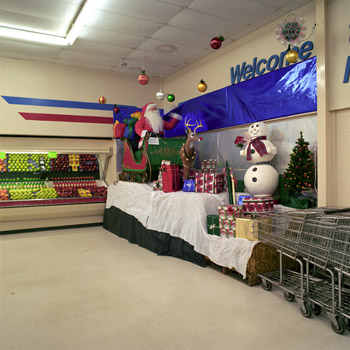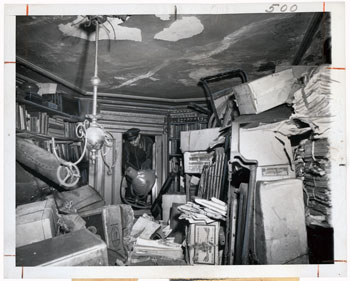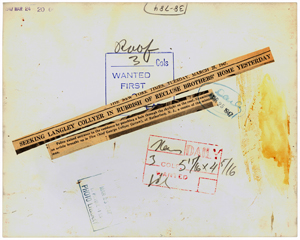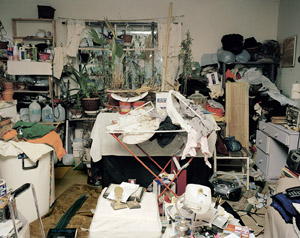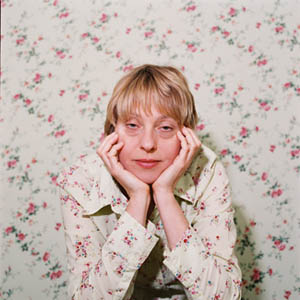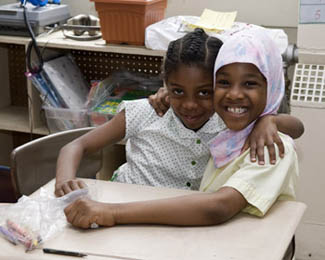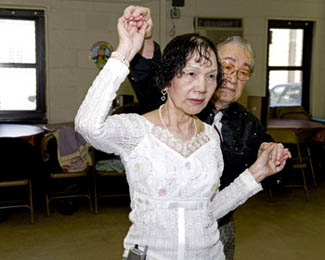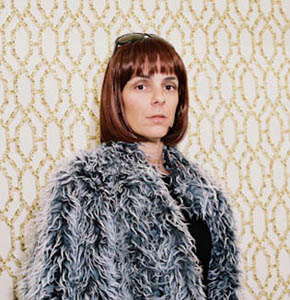Tag Archives: 30 x 30
30 By 30: Greer Muldowney / Lee Miller
30 Women Photographers and the Women Photographers Who Inspired Them
A Blog Series in Honor of Women’s History Month, March 1 – 31
Greer Muldowney is an artist and professor of photography at the New Hampshire Institute of Art and the New England Institute of Art. She has a degree in Political Science and Studio Art from Clark University, and a MFA from the Savannah College of Art and Design. She has worked for photographers Stephen DiRado and Henry Horenstein, and acted as curator for the Desotorow Gallery in Savannah, Georgia, and as an assistant curator at the Panopticon Gallery in Boston.
Her work has been exhibited and published in the United States, Hong Kong, Malaysia and France, and she is the Grand Prize winner of Professional Women Photographers’ 36th Anniversary International Open Call. This exhibition will open May 9th at the .No Gallery, with a reception on May 11th.
Which woman photographer inspired you most?
GM: There are many artists and photographers I am infatuated with for their work and contribution to the field, but the one who leaps to mind is Lee Miller. Her many contributions to photography are astounding and somewhat overlooked. I feel she has been marginalized as a model, a muse, and footnote to those she collaborated with, most notably Man Ray and fellow war correspondent, Margaret Bourke-White.
Miller’s work and contribution to Surrealism solidified her place in the canon of fine art. Her bravery and compassion as a war correspondent for Vogue provided unflinching imagery from the front lines of World War II, and her fashion work for Vogue contributed to its iconic aesthetic, and proved that women can wear many hats professionally and creatively.
Later in her career she was affected deeply by depression-what is now known as post traumatic stress syndrome-due to her experiences during the war. However, Miller exhibited a persistence and drive to make work even after this time period.
When did you become aware of her?
GM: As an undergraduate photography major, where Miller was addressed more as a footnote to Man Ray’s brilliance. Perhaps she was overlooked because of her placement in time. Now, as an educator of young photographers, Miller often comes up when speaking about art, war, fashion and feminism.
You write about your images of Hong Kong: “by making imagery here, I ask viewers to contemplate these issues [sustainability], but to also see these places as homes; not statistics.€ Do you feel that by being a woman photographer, you bring a different perspective to the table?
GM: That’s a funny question, as I’ve had a few instances of being addressed as a man in regards to this body of work. Shooting architecture, which has historically been a man’s genre (Edward Burtynsky, Michael Wolf), with a gender-ambiguous name, has elicited a few embarrassing and good natured apologies when I respond to inquires with “by the way, I’m a woman” response. I think they are anticipating a brusk, Indiana Jones type, and I am more than fine with this.
In regards to my work, I feel that my feminine perspective has played less of a role than my being a westerner. The photographs are about grappling with how we perceive modern China through the imagery and media. I speak a great deal about humanizing these places, because it is very easy to speak in population statistics and resource consumption, pollution and bad policy. I went in as an outsider and wanted to make the imagery as beautiful as I could for other outsiders. We make assumptions about other cultures, cities and systemic problems, but only perceive them from the outside, and through the visuals provided to us. By making my photographs approachable, not dense and intimidating, I hope to incite these conversations, or at least challenge former perceptions.
How does photography change people-by the pictures they take, by the pictures they see?
GM: I think photography has the dual power of both celebrating and challenging what it captures. I often tell my students (much to their eye-rolling) that photography is not in a vacuum, and it shapes policy, opinion and society more than they are remotely conscious of. This means not only profound images that stop you in your tracks, but the advertisements, subtle displays and acts of beauty that we may not spend any thought on at all. I hope that they take from this a sense of responsibility, and respect for their medium which is most pervasive in the world.
________________________________
Lee Miller was born in 1907 in Poughkeepsie, New York. She began as a model for greats like Edward Steichen and George Hoyningen-Huene, and in 1929 went to Paris to apprentice with Man Ray. She opened a studio there, then in New York in 1932.
She left New York to marry businessman, Aziz Eloui Bey, and in Egypt, made some of her most striking Surrealist photographs. In 1937, she met Roland Penrose, a Surrealist artist and arts patron, in Paris, and moved to England. When World War II broke out, she embarked on a career as a photojournalist, covering the Blitz, the siege of St. Malo, the Liberation of Paris, the link up of the Russian and American armies, and the liberation of Buchenwald and Dachau. A famous picture shows her bathing in Hitler’s bathtub.
In 1947, Miller married Penrose and gave birth to her only child, Antony. They lived at Farley Farm House in Sussex, where Penrose became a collector and supporter of artists like Picasso, Henry Moore, Jean Dubuffet and Max Ernst, many of whom Miller photographed.
Miller had great beauty and great success, but also a dark side that included a childhood rape, and later alcoholism and depression. She died from cancer in 1977 at Farley Farm House.
- Catherine Kirkpatrick, Archives Director
______________________________
30 By 30 blog series:
Intro: Dianora Niccolini / Women of Vision
Lauren Fleishman / Nan Goldin
Darleen Rubin / Louise Dahl-Wolfe
Dannielle Hayes / Diane Arbus
Meryl Meisler / Via Wynroth
Shana Schnur / Louise Dahl-Wolfe
Claudia Kunin / Imogen Cunningham
Gigi Stoll / Flo Fox
Robbie Kaye / Abi Hodes
Alice Sachs Zimet / Lisette Model
Juliana Sohn / Sally Mann
Susan May Tell / Lilo Raymond
Nora Kobrenik / Cindy Sherman
Caroline Coon / Ida Kar
Lisa Kahane / Jill Freedman
Karen Smul / Dorothea Lange
Claudia Sohrens / Martha Rosler
Laine Wyatt / Diane Arbus
Ruth Fremson / Strength From the Many
Greer Muldowney / Lee Miller
Rachel Barrett / Vera Lutter
Aline Smithson / Brigitte Lacombe
Ann George / Josephine Sacabo
Judi Bommarito / Mary Ellen Mark
Kay Kenny / Judy Dater
Editta Sherman / The Natural
Patt Blue / Ruth Orkin
Vicki Goldberg / Margaret Bourke-White
Beth Schiffer / Carrie Mae Weems
Anonymous / Her Mother
30 By 30: Ruth Fremson / Strength from the Many
30 Women Photographers and the Women Photographers Who Inspired Them
A Blog Series in Honor of Women’s History Month, March 1 – 31
Ruth Fremson is a photographer for The New York Times, where she is also a frequent contributor to LENS Blog. She was part of the Associated Press team that won the 1999 Pulitzer Prize for feature photography for coverage of the Clinton impeachment, and her photographs of 9/11 and Afghanistan helped The New York Times win Pulitzer Prizes for breaking news photography and feature photography in 2002.
In an interview with The Digital Journalist, Fremson said: “it’s documenting history.…that’s why we do this….We don’t do this to go out and win awards.€
Fremson has gone and seen and photographed so that we can see ourselves. Without the filter of language and telling, by showing, she has put a human face on conflict and history.
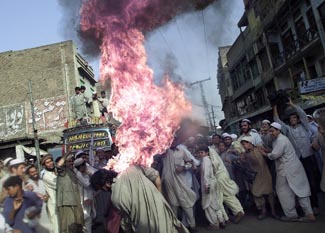
A Pakistani man sets himself on fire accidentally as he tries to light an American flag on fire during an anti-American protest 2001 ©Ruth Fremson/The New York Times
Which woman photographer inspired you most?
RF: I can’t single out one female photographer who influenced me. So many have had a part in shaping me as a photojournalist. I entered the photojournalism world as an intern at The Washington Times in 1988. At the time, there were many talented, successful female photographers working in Washington, D.C. who embraced me and made me a part of their community. I was in awe of the intimidating elegance of Time Magazine’s Diana Walker, the humanity captured by The Washington Post’s Carol Guzy and Dayna Smith, the steadfastness of Time Magazine’s Cynthia Johnson, the grace of The Washington Post’s Susan Biddle, the tenaciousness of AP’s Marcy Nighswander, the professionalism of White House photographer, Barbara Kinney, the gregariousness of White House photographer, Sharon Farmer, the beauty of National Geographic’s Annie Griffiths Belt’s images. They all had a part in shaping me as a photojournalist, as did other photographers who I never met: Mary Ellen Mark, whose early work in India to the present continues to inspire me for its unique vision, Cindy Sherman who put the exclamation point on being female, Margaret Bourke-White who covered an astonishing range during her career, April Saul who taught me “don’t look at the sunset, look at the reflection,” and Anja Neidringhaus, an AP photographer currently based in Europe, who, despite not being as common a name as she should be, continues to rival anyone for guts, bravery and bringing the difficult and dangerous stories like the Libya uprising and the war in Afghanistan, home. I also need to mention Vicki Goldberg’s amazing writing about photography, which enhances my understanding of our medium and its contributors.
Many people take owning a camera for granted. They have them on their phones; they can take pictures anywhere, anytime. How, in areas of the world where cameras are not commonplace and women are not typically empowered, do cameras and photography help them understand and interact with the world on a personal and political level?
RF: In areas where cameras are not commonplace (an increasingly shrinking place) cameras and photography have the secondary effect of bringing services and aid. I think of nomadic women I photographed women in a feeding center in rural, central, remote India. These women are illiterate and their children chronically malnourished. The same goes for women in rural Chad, where I photographed women in a birthing center. In both of these areas women do not have access to cameras or photography. Rather, their lives consist of literally making it to the next day. When photography comes to them, because a journalist is interested in their lives, their plight is illuminated when that work is seen by a larger audience. When that increased awareness and modicum of understanding is achieved, assistance and resources may follow.
Unfortunately, the opposite can happen as well. In Haiti, which I traveled to periodically from 1994 until most recently in 2010, people have become cynical about photography. Many will demand money in exchange for being photographed. The gentler ones will harshly tell you that journalists have been photographing them for decades and yet nothing has changed their poverty or the corruption in their country.
How does photography change people-by the pictures they take, by the pictures they see?
RF: I believe it was Dorothea Lange who said “a photographer is someone who teaches people how to see without a camera.€ Photography, by preserving a random pixel of life, keeps moments, people, and history present, alive and relevant. We are the sum of our experiences so, while I may not think about every person or event I have photographed, I always carry a little bit of each with me. All of it adds up to a deeper understanding of human nature and the world we reside in. It is who I am.
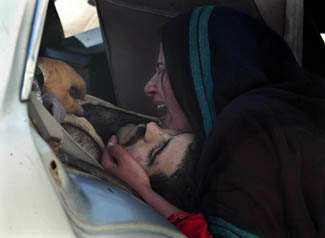
An Iraqi woman grieves for her husband as she finds him dead as they reach the hospital where she rushed him after he was caught in crossfire on the day Saddam fell in Iraq ©Ruth Fremson/The New York Times
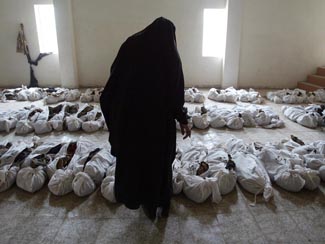
An Iraqi woman searches through dug up remains from a mass grave to find a lost relative in Iraq, 2003 ©Ruth Fremson/The New York Times
_____________________________
Editor’s Note: I’ve been busy putting this blog series together, so when I asked the question “How do pictures change us?” it was just a question. Then I saw these pictures and knew the answer was in them; no words were necessary. Photographs do have the power to change hearts and minds. These changed mine.
- Catherine Kirkpatrick, Archive Director
______________________________
30 By 30 blog series:
Intro: Dianora Niccolini / Women of Vision
Lauren Fleishman / Nan Goldin
Darleen Rubin / Louise Dahl-Wolfe
Dannielle Hayes / Diane Arbus
Meryl Meisler / Via Wynroth
Shana Schnur / Louise Dahl-Wolfe
Claudia Kunin / Imogen Cunningham
Gigi Stoll / Flo Fox
Robbie Kaye / Abi Hodes
Alice Sachs Zimet / Lisette Model
Juliana Sohn / Sally Mann
Susan May Tell / Lilo Raymond
Nora Kobrenik / Cindy Sherman
Caroline Coon / Ida Kar
Lisa Kahane / Jill Freedman
Karen Smul / Dorothea Lange
Claudia Sohrens / Martha Rosler
Laine Wyatt / Diane Arbus
Ruth Fremson / Strength From the Many
Greer Muldowney / Lee Miller
Rachel Barrett / Vera Lutter
Aline Smithson / Brigitte Lacombe
Ann George / Josephine Sacabo
Judi Bommarito / Mary Ellen Mark
Kay Kenny / Judy Dater
Editta Sherman / The Natural
Patt Blue / Ruth Orkin
Vicki Goldberg / Margaret Bourke-White
Beth Schiffer / Carrie Mae Weems
Anonymous / Her Mother
30 By 30: Laine Wyatt / Diane Arbus
30 Women Photographers and the Women Photographers Who Inspired Them
A Blog Series in Honor of Women’s History Month, March 1 – 31
Laine Wyatt is an Associate Professor with the University of Central Florida’s School of Visual Arts & Design. She is an active member of the Society for Photographic Education (since 1995), and has served as Portfolio Reviewer at the national conference since 2005. Wyatt has exhibited her work in more than a hundred exhibitions across the country and in Europe, and has won a number of awards for individual works.
Which woman photographer inspired you most?
LW: Diane Arbus was the one I noticed first. I appreciate her ability and willingness to cross over to the ‘other’ not only by photographing them, but also by spending time with them. Yet when I first discovered her, it was the rawness of the work. All the images seemed to be walking a little tightrope of constrained emotional intensity. I felt a personal resonance.
When did you become aware of her?
LW: During my first semester away from home during an assignment for drawing class, before I ever began studying photography. I came upon her images in a magazine and chose them to reproduce in graphite. I didn’t realize it was her work-I just responded to the pictures.
Later I realized that the images had told me it was possible, preferable, that an image have an emotive life, that representation wasn’t enough.
Many of your photographs take place in lonely spaces. Can you talk a little bit about this?
LW: Rarely do I set out to make certain types of photographs, as in the start of a series. I find that I just respond to visual situations. I can discuss the images academically, but it’s the emotional resonance that persuades me to make most pictures. On some level, the visual experience references an interior experience. These images, in a general way, can speak to a sense of loss and longing, but in more specific ways, they talk about how we appoint the spaces we inhabit, and they offer us a moment in which to consider how we relate to these things and spaces. The juxtaposition of objects and their spaces suggest values, belief systems and priorities. I am intrigued by how these spaces, in their ordinariness, are arrestingly beautiful and simultaneously strange. They exist in these ways only momentarily. They are curious and commonplace, visible and invisible.
Women today are often forced to make hard choices between their personal and professional lives. Have events in your own life affected your art?
LW: Several years ago, after the loss of my father and my mother, I became the guardian for my brother, Keith, who had Downs Syndrome. In a sense, he became the child I never had. Not that I didn’t have help from my other brothers and sister, but suddenly becoming responsible for someone who couldn’t fully express or help himself was daunting, psychically overwhelming. I realized though that being Keith’s sister gave me insight into life in a way many folks can’t or aren’t willing to engage in. It has sensitized me to be outside myself. I’m able to consider other perspectives, but sometimes too this awareness produces a melancholy state.
Any advice to women photographers today?
LW: Learn to understand yourself and develop your own personal vision. Learning to know yourself is a tricky process, especially n this fast paced world. If we can each learn about our own process, which allows for intuitive honesty, we have the ability to rely on intuition which leads to the right decisions. And making the right decisions eventually creates your personal vision and work that is unique and meaningful to you.
_____________________________________
Diane Arbus was was born in New York in 1923. Her interest in art emerged in high school, and she had early success with her husband, Allan Arbus, in advertising and fashion photography. She studied with Lisette Model at the New School, and began to photograph people she came across in the city. Some of these images were featured in 1960 in Esquire magazine (“The Vertical Journey: Six Movements of a Moment Within the Heart of the City€), and her work began to become more widely known. While many other photographers have copied her subject matter, nobody has ever photographed like Diane Arbus. Her work is unique and unmistakable; a permanent landmark in the medium of photography. Despite her success, she struggled with depression, and died by her own hand in her Westbeth apartment in 1971.
- Catherine Kirkpatrick, Archives Director
______________________________
30 By 30 blog series:
Intro: Dianora Niccolini / Women of Vision
Lauren Fleishman / Nan Goldin
Darleen Rubin / Louise Dahl-Wolfe
Dannielle Hayes / Diane Arbus
Meryl Meisler / Via Wynroth
Shana Schnur / Louise Dahl-Wolfe
Claudia Kunin / Imogen Cunningham
Gigi Stoll / Flo Fox
Robbie Kaye / Abi Hodes
Alice Sachs Zimet / Lisette Model
Juliana Sohn / Sally Mann
Susan May Tell / Lilo Raymond
Nora Kobrenik / Cindy Sherman
Caroline Coon / Ida Kar
Lisa Kahane / Jill Freedman
Karen Smul / Dorothea Lange
Claudia Sohrens / Martha Rosler
Laine Wyatt / Diane Arbus
Ruth Fremson / Strength From the Many
Greer Muldowney / Lee Miller
Rachel Barrett / Vera Lutter
Aline Smithson / Brigitte Lacombe
Ann George / Josephine Sacabo
Judi Bommarito / Mary Ellen Mark
Kay Kenny / Judy Dater
Editta Sherman / The Natural
Patt Blue / Ruth Orkin
Vicki Goldberg / Margaret Bourke-White
Beth Schiffer / Carrie Mae Weems
Anonymous / Her Mother
30 By 30: Claudia Sohrens / Martha Rosler
30 Women Photographers and the Women Photographers Who Inspired Them
A Blog Series in Honor of Women’s History Month, March 1 – 31
Claudia Sohrens is visual artist and educator who was born in Germany and now lives and works in New York City. She is the recipient of the 2010 NYFA fellowship in Photography, and has participated in several artist residencies, including one at the Bronx Museum. Her work has been included in exhibitions at the Bronx Museum, the Brooklyn Museum and the Artists Space, as well as the international Electronic Language Festival in Sao Paulo, the Project Space at Kunsthalle Wien, KW, the Institute for Contemporary Art in Berlin, and the Kampnagel KX in Hamburg.
Sohrens received her BFA in Communications Design from IN.D, in Hamburg, and an MA in Media and Communications from the European Graduate School in Switzerland, where she is now a PhD candidate. She is on the faculty in the Full-Time General Studies Program at the International Center of Photography, in the Photography Department at Parsons The New School for Design, and in the Communications Design Department at Pratt Institute.
Sohrens utilizes photo archives, and works with appropriated imagery in her art.
Which woman photographer inspired you most?
CS: I’ve been inspired by photo-conceptual work, like Martha Rosler’s narrative photo essays.
As artists we have become simultaneously “the researched” and “the researcher.”
As cultural life is expressed in distributed archives, indexed by search engines, and aggregated for personal information portals, areas of practice, prior considered insignificant swamp of cultural production and exchange, have become irrepressibly significant and productive.
My work is an investigation of the political, cultural, economic and conceptual implications behind archives and cultural repositories.
When did you become aware of her?
CS: I’ve discovered Martha Rosler’s work during my studies in Hamburg in the 1990s.
What did you learn from her?
CS: The creation of work that expands the notion of the standard photo on the wall.
The power of appropriation!
The importance of a creative approach to research and cross-disciplinary collaborations.
To use memories’ slippages, its erasure and substitution as a creative force to break with historical and institutional repetition as well as cultural and social patterns.
If you had to give one piece of advice to other photographers starting out today, what would it be?
CS: Take risks and turn your empirical knowledge into concrete forms as opposed to following “schools€ that are swayed by conformity!
What would you like to see more of or different in the art/photographic field?
CS: I would like to see a new autonomous art field, split from the current market-dominated art world, which will produce and reward noncommercial values!
__________________________
Martha Rosler is a multi-discipline artist and writer born in Brooklyn in 1943. She received a B.A. from Brooklyn College in 1965, and an M.F.A. from the University of California, San Diego in 1974.
While at the University of California, Rosler began working in video, and became a pioneer in combining different media, including video, performance art, photo-collage and photo-text, borrowing from representations of the culture to comment on the culture, gender, historical and political events.
In narration for a New York Times web slideshow, she commented on her photo-collages:
“I actually started as a painter, and was really interested in photography at the same time. I started looking at newspaper photos and magazine photographs, and I was thinking about how on the one page you could have a picture of some terrible atrocity of war and on the next page there would be an ad for a sofa, and I got the idea to put them together. So I was looking for a kind of presence or “presentness€ that was considered theatrical and therefore offensive to the modernist critics. But it really attracted me.€
Rosler has been included in exhibitions at London’s Institute of Contemporary Art, the Museum of Modern Art, the Dia Center for the Arts, as well as several Whitney biennials. In 2000, Rosler was the subject of a retrospective, “Martha Rosler: Positions in the Life World,€ that was exhibited at the New Museum and the International Center of Photography in New York, as well as in England, Austria, France, Spain and Holland.
- Catherine Kirkpatrick, Archives Director
______________________________
30 By 30 blog series:
Intro: Dianora Niccolini / Women of Vision
Lauren Fleishman / Nan Goldin
Darleen Rubin / Louise Dahl-Wolfe
Dannielle Hayes / Diane Arbus
Meryl Meisler / Via Wynroth
Shana Schnur / Louise Dahl-Wolfe
Claudia Kunin / Imogen Cunningham
Gigi Stoll / Flo Fox
Robbie Kaye / Abi Hodes
Alice Sachs Zimet / Lisette Model
Juliana Sohn / Sally Mann
Susan May Tell / Lilo Raymond
Nora Kobrenik / Cindy Sherman
Caroline Coon / Ida Kar
Lisa Kahane / Jill Freedman
Karen Smul / Dorothea Lange
Claudia Sohrens / Martha Rosler
Laine Wyatt / Diane Arbus
Ruth Fremson / Strength From the Many
Greer Muldowney / Lee Miller
Rachel Barrett / Vera Lutter
Aline Smithson / Brigitte Lacombe
Ann George / Josephine Sacabo
Judi Bommarito / Mary Ellen Mark
Kay Kenny / Judy Dater
Editta Sherman / The Natural
Patt Blue / Ruth Orkin
Vicki Goldberg / Margaret Bourke-White
Beth Schiffer / Carrie Mae Weems
Anonymous / Her Mother
30 By 30: Karen Smul / Dorothea Lange
30 Women Photographers and the Women Photographers Who Inspired Them
A Blog Series in Honor of Women’s History Month, March 1 – 31
Karen Judlowe Smul graduated from the University of Pennsylvania with a degree in Electrical Engineering in 1985, and from Stanford Law School in 1988. She has studied at the International Center of Photography and served on the board of Professional Women Photographers, where she is currently co-chair of the Community Service Committee.
In her personal work, Smul is currently focusing on a series of environmental portraits called “Home Alone,€ which explores the lives of professional woman who chose to give up growing careers to raise children. As the children grow up, these women find they are still caught up in the “problem with no name€ identified by Betty Freidan in her 1963 book, The Feminine Mystique.
Smul also created her own company, 501SEE Photography, to provide images to non-profits for use in annual reports, brochures, websites, and to build up their photographic archives.
She lives in New York City with her husband and three children.
Which woman photographer inspired you most?
KS: There are several women photographers who have inspired me-for different reasons. I have always loved the work of Dorothea Lange and particularly her image “Migrant Mother.” The image is so powerful to me both for its visual impact of the timeless mother’s face and hand, and for its for its documentary power. It is impossible to look at this photograph and not relate to the subject. Her despair, unfortunately, is still very real today. Other influential photographers are Nan Goldin and Tina Barney. During a photography class at ICP, I realized that I enjoyed their work, and particularly their portraits, because they opened an honest window on their worlds (even if posed shots). These photographers were documenting their own lives, families and culture. I suddenly understand that photography was much like the old maxim for writing-”shoot” what you know.
What led you to start 501SEE?
KS: I have always gravitated to portraiture. As I started to grow as a photographer, I volunteered at my children’s schools, my synagogue and other non-profits in order to improve my skills and to gain access to new faces and environments. After a year or two, I realized that this type of photography was a passion-I wanted to make my career in this field. By photographing for non-profits, I have been able to get an insider’s view of many different microcosms of New York City, and to participate in a range of successful programming for needy families and children. It is a very meaningful field and is particularly rewarding because so many of the subjects want to be photographed. I have found that many of the people pushed to the side of our society are grateful to be recognized by the focus of a camera. One of my favorite experiences took place at a senior center which is part of University Settlement. I captivated by an elderly Asian woman in a hairnet with an unusual face. I took several photographs of her and was worried that perhaps I was bothering her. As I began to walk away, however, she gestured to me. Although she didn’t speak any English, she reached in her pocket, gave me some candies and smiled.
In another role, I taught photography to seniors at the Manhattanville Housing Project as part of a Housing Authority arts program. Again, it was a wonderful entry into a completely new and interesting community in New York. My students were great-attentive and excited. They documented their lives from their apartment windows to their churches and included wonderful images of their family members. It was a fantastic learning experience for me too.
Can you also address the resistance many photographers have about giving away pictures?
KS:I understand the resistance of photographers to volunteer their time and work without pay. If non-profits or other organizations demand only “free” photography, they do not necessarily appreciate the skills of a professional photographer or the value of great image. Still, non-profits rely on volunteers in all aspects of their programming. It is important to make the determination of whether I am volunteering or am providing professional services which should be compensated.
You have a body of work called “Home Alone€ about women who gave up careers to raise children. Can you talk about the tough choices women have to make between their personal and professional lives?
KS: As I wrote in my statement accompanying the series, I think women still have a long way to go in order to solve Betty Friedan’s “problem with no name.” When my second child was born, I stopped working and took only part-time or volunteer jobs for several years. As my children grew older, I started to second-guess my decision to leave behind a very hectic but rewarding legal career. I sensed that other women felt the same way. In the series, I try to capture the ambivalence I feel about leaving a full-time career for motherhood, particularly as my children grew older and needed less of my time and attention.
What are you currently working on?
KS: I am a volunteer in the college office at Murry Bergtraum, helping juniors and seniors there prepare for the college process. Most, if not all, of the students I help require a very large financial aid package in order to attend any college. The students work incredibly hard to apply for scholarships, grants and other forms of financial aid. I would like to start a project photographing my students and then recording all the different sources of funding for their college educations.
_____________________________
Dorothea Lange was born in 1895 in Hoboken, New Jersey. When she was seven, she was stricken with polio which left her with a permanent limp; at twelve, her father abandoned the family.
Lange learned photography in a class taught by Clarence White at Columbia University, then apprenticed at several New York studios, including that of Arnold Genthe. In 1918, she moved to San Francisco, opened a studio of her own, and two years later married painter Maynard Dixon, with whom she had two sons.
When the Depression came, Lange started photographing the homeless and unemployed, and began working for the Resettlement Administration (which later became the Farm Security Administration). In 1935, she divorced Dixon and married Paul Schuster Taylor, an economics professor at the University of California. Together they began to document sharecroppers and migrant laborers, bringing their plight to national attention.
In 1941, Lange was awarded a Guggenheim Fellowship, but gave it up. In 1942, she was hired by the War Relocation Authority to photograph the relocation of Japanese Americans to internment camps. These images which were sympathetic to the displaced and showed them as loyal Americans, were impounded by the army, but are available today through the National Archives and the University of California, Berkeley.
In later years, Lange taught at the California School of the Arts and was one of the founders of Aperture Magazine. She died in 1965.
- Catherine Kirkpatrick, Archives Director
______________________________
30 By 30 blog series:


